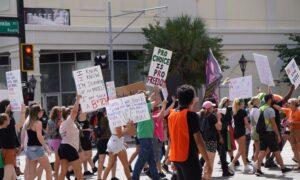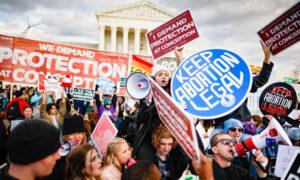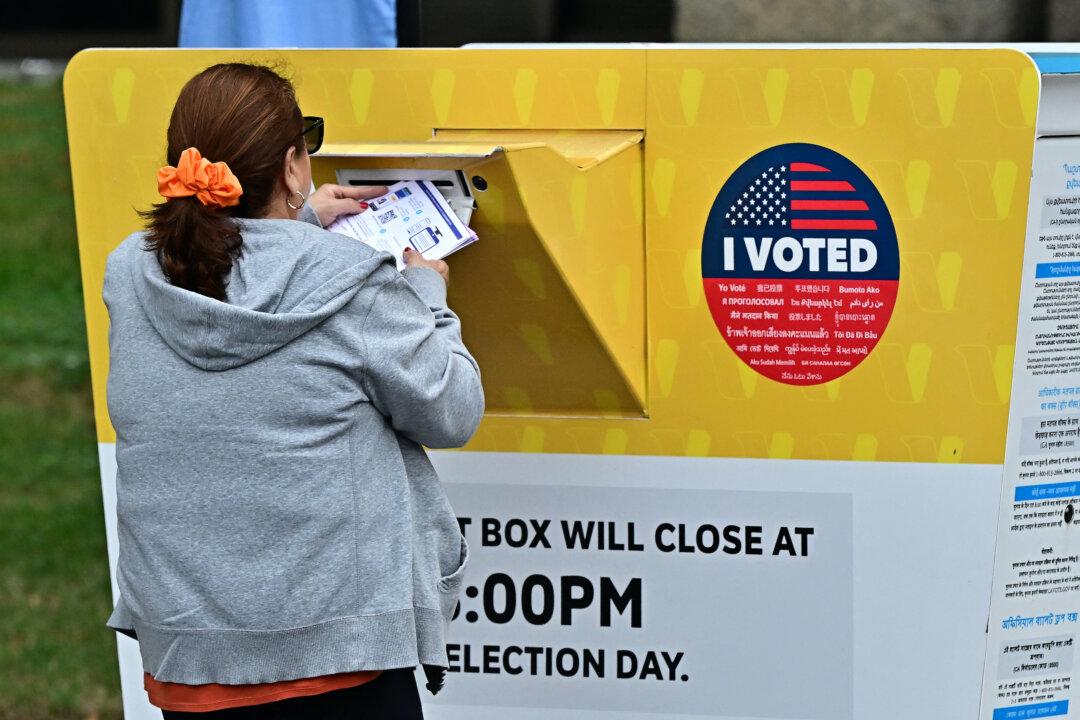The Florida Supreme Court heard oral arguments on Feb. 7 both for and against placing a constitutional amendment on the ballot that would grant a right to abortion through fetal “viability,” and in some cases, through birth.
The amendment’s sponsor, Floridians Protecting Freedom, has already collected enough signatures to get the measure on the ballot in November. But at the request of Republican Attorney General Ashley Moody, the court is now set to decide if the amendment’s language is deceptively broad.
“I don’t think the ballot summary adequately discloses that potentiality,” argued Nathan Forrester, Florida’s senior deputy solicitor general, before the court. “Some voters may suss it out. Other voters will not.”
Specifically, the amendment states that “no law shall prohibit, penalize, delay, or restrict abortion before viability or when necessary to protect the patient’s health, as determined by the patient’s healthcare provider.”
The ballot summary includes that same text with the added explanation that the amendment “does not change the Legislature’s constitutional authority to require notification to a parent or guardian before a minor has an abortion.”
However, according to the state, that explanation does not adequately describe to voters the exact terms of what they would be voting for.
In the wake of the U.S. Supreme Court’s Dobbs decision overturning Roe v. Wade, seven states have put abortion-related initiatives on the ballot, with each resulting in a victory for advocates of the procedure. One of the common arguments against those measures was that the language was too vague, leaving too much open to interpretation.
But during Wednesday’s hearing, Chief Justice Carlos Muñiz brushed off arguments that the amendment’s text attempts to conceal its scope.
“It’s pretty obvious that this is a pretty aggressive, comprehensive approach to dealing with this issue,” he said, holding that the voters could decide if they prefer a more nuanced approach.
‘Viability’
One of the primary targets of the state’s criticism of the amendment was its use of the term “viability.”Historically, the word has been used in abortion law in reference to the point at which an unborn child can survive outside of the womb, which is generally accepted to occur sometime between 21 and 24 weeks gestation. Ms. Moody, however, had claimed that voters could potentially interpret the term according to its clinical use—that is, a pregnancy that would result in a live birth, barring any complications or an abortion.
But Courtney Brewer, an attorney for Floridians Protecting Freedom, argued there is “no question” that voters understand what viability means in the context of abortion.
“This is a term and its meaning that have become a part of the cultural fabric of our nation,” she held in court.
Still, Justice Meredith Sasso questioned whether the ballot summary made it clear to voters that, in this case, viability would not depend on a generally accepted standard but rather the determination of a woman’s health care provider.
“Why would it be unreasonable for a voter to read this language and say, ‘I’ll vote for it because the Legislature will be able to have a ban at 21 weeks with exceptions for the health of the mother?”
Ms. Brewer said such an interpretation would be unreasonable because it would be inconsistent with the language of the amendment.
“That would be a surprise to a lot of voters, wouldn’t it?” the judge countered.
Ms. Brewer disagreed, “I think that the voters are perfectly capable of reading this language and understanding it and would understand the ins and outs of it.”
She also noted that in a previous case, Florida Education Association v. Florida Department of State, the court held that what voters might believe about an amendment wasn’t important, only that they were given fair notice of what they were voting on.
In that vein, Justice Sasso pointed out that the ballot summary, in this case, does not give voters a full explanation of what the legal ramifications of passing the amendment would be.
Personhood
Another question Chief Justice Muñiz raised is whether the amendment might run afoul of Article I, Section 2 of the Florida Constitution.Under that law, “All natural persons, female and male alike, are equal before the law and have inalienable rights, among which are the right to enjoy and defend life and liberty, to pursue happiness, to be rewarded for industry, and to acquire, possess and protect property.”
The proposed amendment, the judge noted, “assumes that the constitution, as it exists right now, is silent as to any rights of the unborn. And I don’t know if that assumption is correct.”
Neither Ms. Brewer nor Mr. Forrester appeared prepared for that line of questioning, though the latter acknowledged that it could be another reason for the court to reject the amendment.
“I will confess to you, your honor, this is not an argument that I had thought about, so I’m speaking a little off-the-cuff here, but I do see a potential for that argument to be viable,” Mr. Forrester said. He added, though, that he did not believe the state had taken a position on that particular issue.
Ms. Brewer, on the other hand, said she did not believe those rights apply to the unborn under Florida law. She also contended that it would be asking too much of the amendment’s sponsor to wade into all the potential legal conflicts that could arise from its passage in the ballot summary.
And that’s an argument that Justice Charles Canady appeared receptive to.
“It just seems like it imposes an impossible burden on the people proposing an amendment,” he said. “And it seems like to me all these things have to be argued about in the political process because, otherwise, it is a restriction on the substance of what can be proposed. We’re not given the power in the constitution to impose such a restriction.”
Florida currently bars most abortions after 15 weeks’ gestation. A six-week limit Gov. Ron DeSantis signed last year remains in limbo as the state Supreme Court weighs the validity of the 15-week limit.







